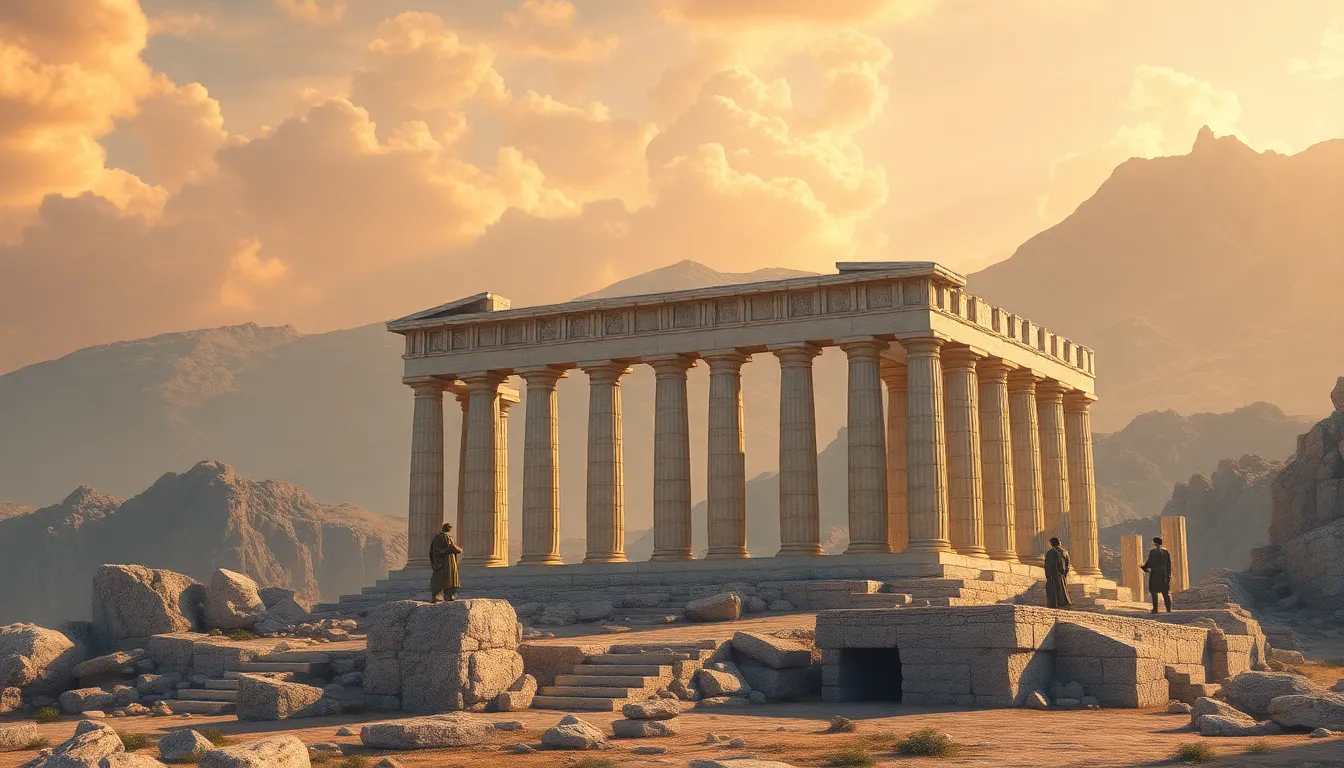The Forgotten Stories of Atlas: Beyond the Myth
I. Introduction
Atlas is a prominent figure in Greek mythology, often depicted as the Titan who bears the weight of the heavens on his shoulders. His image evokes strength, endurance, and a sense of burden that resonates through various narratives. However, beyond the well-known tales lie lesser-known stories and interpretations that enrich our understanding of this complex character. This article aims to delve into the forgotten stories of Atlas, exploring his origins, his symbolic significance, and his influence on both ancient and modern culture.
II. The Origin of Atlas: A Titan’s Legacy
To comprehend Atlas’s legacy, it is essential to consider the historical context of Titan mythology. The Titans were a race of powerful deities that predated the Olympian gods, embodying primordial forces of nature and humanity.
A. Historical context of the Titan mythology
The Titans, led by Cronus, ruled during the Golden Age. Atlas was one of the sons of Iapetus and Clymene, and he played a significant role in the Titanomachy—the epic battle between the Titans and the Olympians, led by Zeus. The defeat of the Titans marked a critical turning point in Greek mythology.
B. Atlas’s role in the Titanomachy and its aftermath
After the Titans were defeated, Zeus punished Atlas by condemning him to hold up the heavens for eternity. This punishment has been interpreted in various ways, often symbolizing the burden of leadership and the weight of responsibility. However, some interpretations suggest that Atlas’s role was not merely one of punishment but also of endurance and resilience in the face of adversity.
III. Atlas and the World: The Burden of the Heavens
The most enduring image of Atlas is that of a figure supporting the weight of the sky. This portrayal transcends simple physicality, instead embodying deeper themes of struggle and perseverance.
A. The myth of Atlas holding up the sky
In most versions of the myth, Atlas is depicted as a colossal figure standing on the edge of the world, with the heavens resting on his shoulders. This imagery has inspired countless artists and writers throughout history, representing the idea of bearing burdens that are often too heavy to carry.
B. Symbolism of Atlas as a figure of endurance and strength
Atlas symbolizes more than just physical strength; he represents:
- The struggle against insurmountable odds
- The endurance required to face life’s challenges
- The weight of expectations placed upon individuals in society
These themes resonate deeply with human experiences, making Atlas a timeless figure in the study of mythology.
IV. Atlas in Ancient Art and Literature
Throughout history, Atlas has been a popular subject in various art forms, from sculpture to pottery, reflecting his significance in ancient culture.
A. Representations of Atlas in Greek sculpture and pottery
In ancient Greek art, Atlas is often depicted as a muscular man, sometimes with the globe or celestial sphere on his shoulders. Notable works include:
- The “Atlas” sculpture by the Italian Renaissance artist Michelangelo
- Vases and pottery featuring scenes of Atlas being confronted by heroes such as Heracles
B. Literary references to Atlas beyond the traditional myths
Atlas appears in various literary works beyond the traditional myths, including:
- Hesiod’s “Theogony,” where his lineage and punishment are discussed
- Ovid’s “Metamorphoses,” where Atlas’s transformation into a mountain is mentioned
These references provide a deeper insight into how ancient cultures viewed Atlas, framing him as a symbol of eternal struggle.
V. The Forgotten Stories: Atlas in Lesser-Known Myths
Beyond the mainstream myths of Atlas, there are lesser-known tales that offer alternative perspectives on his character.
A. Alternative narratives and interpretations of Atlas’s character
Some myths suggest that Atlas was not merely a figure of punishment but also a wise and knowledgeable being. In certain traditions, he is depicted as a guardian of knowledge and a guide to travelers.
B. Regional variations and their significance in folklore
Across different regions, Atlas is portrayed in various ways:
- In some Mediterranean cultures, he is seen as a protector of sailors, guiding them through treacherous waters.
- In North African folklore, Atlas is associated with the Atlas Mountains, representing strength and endurance.
These regional variations highlight the adaptability of mythological figures in different cultural contexts.
VI. The Influence of Atlas on Modern Culture
The legacy of Atlas extends far beyond ancient mythology, influencing contemporary literature, film, and art.
A. Atlas in contemporary literature, film, and art
Atlas has been referenced in numerous modern works, including:
- Atlas Shrugged by Ayn Rand, which explores themes of individualism and burden
- Films like “Clash of the Titans,” which depict his mythological origins
B. The metaphorical use of “Atlas” in various contexts
The term “Atlas” has become a metaphor for carrying heavy burdens, often used in discussions about:
- Societal expectations placed on individuals
- Environmental issues and the weight of responsibility for future generations
This metaphorical application underscores the enduring relevance of Atlas in contemporary discussions.
VII. Rediscovering Atlas: The Importance of Mythological Analysis
Examining the forgotten stories of Atlas offers valuable insights into the human experience and the nature of mythology.
A. Value of exploring forgotten stories in mythology
Exploring these narratives allows us to:
- Understand the complexities of mythological figures
- Recognize the cultural significance of these tales in shaping societal values
B. How these narratives shape our understanding of human experience
Mythological stories serve as reflections of human struggles, aspirations, and values. By rediscovering figures like Atlas, we can better appreciate the multifaceted nature of our own challenges and strengths.
VIII. Conclusion
Atlas’s legacy is rich and varied, encompassing themes of endurance, knowledge, and the burden of responsibility. As we explore the forgotten stories surrounding this Titan, we gain a deeper appreciation for his role in mythology and the human experience. We encourage readers to delve further into the world of mythology, uncovering the hidden narratives that continue to shape our understanding of ourselves and the world around us.




